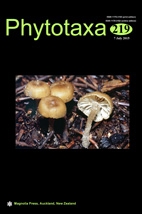Abstract
Articles of the lomentaceous fruits encountered in the thirty-six species of Brazilian Zornia species are described, illustrated and compared using scanning electron microscopy and stereomicroscopy. Macro-and micro-morphological characters of the fruit articles provide excellent diagnostic taxonomic characters (including fruit shape, fruit article surface, presence/absence of glands, presence/absence of bristles, and presence/absence of hairs) to distinguish among the Brazilian taxa. Results generally support the species recognised for Brazil although the micro-morphological characters have limited taxonomic value within some species complexes, in which taxa can be better differentiated using other morphological characteristics. The results of macro-morphological analyses show that the morphology of fruit articles is related to the geographical distribution pattern of each species and is a good source of morphological character to distinguish the species of Zornia. We present here an inedit identification key, based on the loment morphology, to distinguish the Brazilian species of Zornia.

